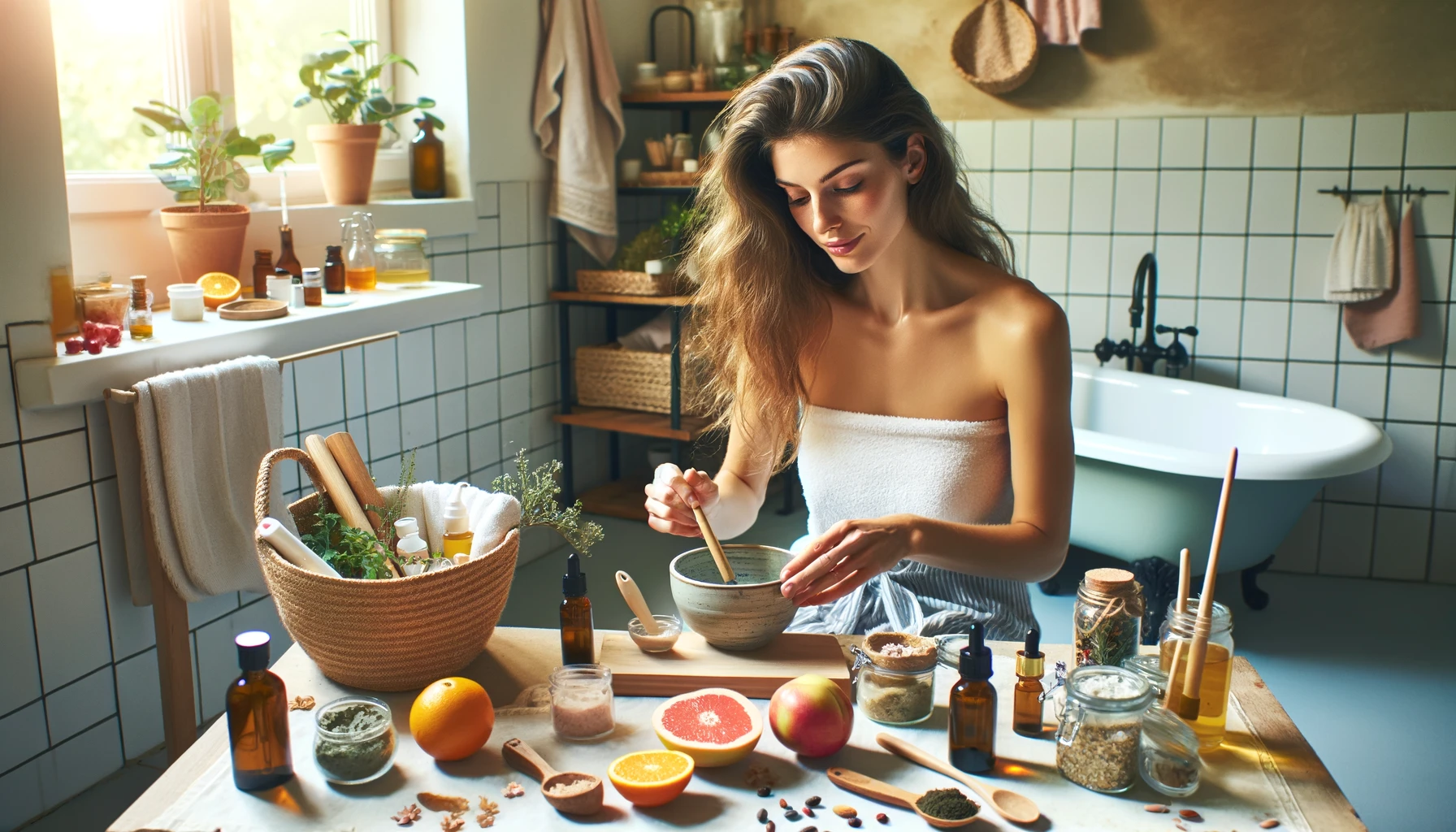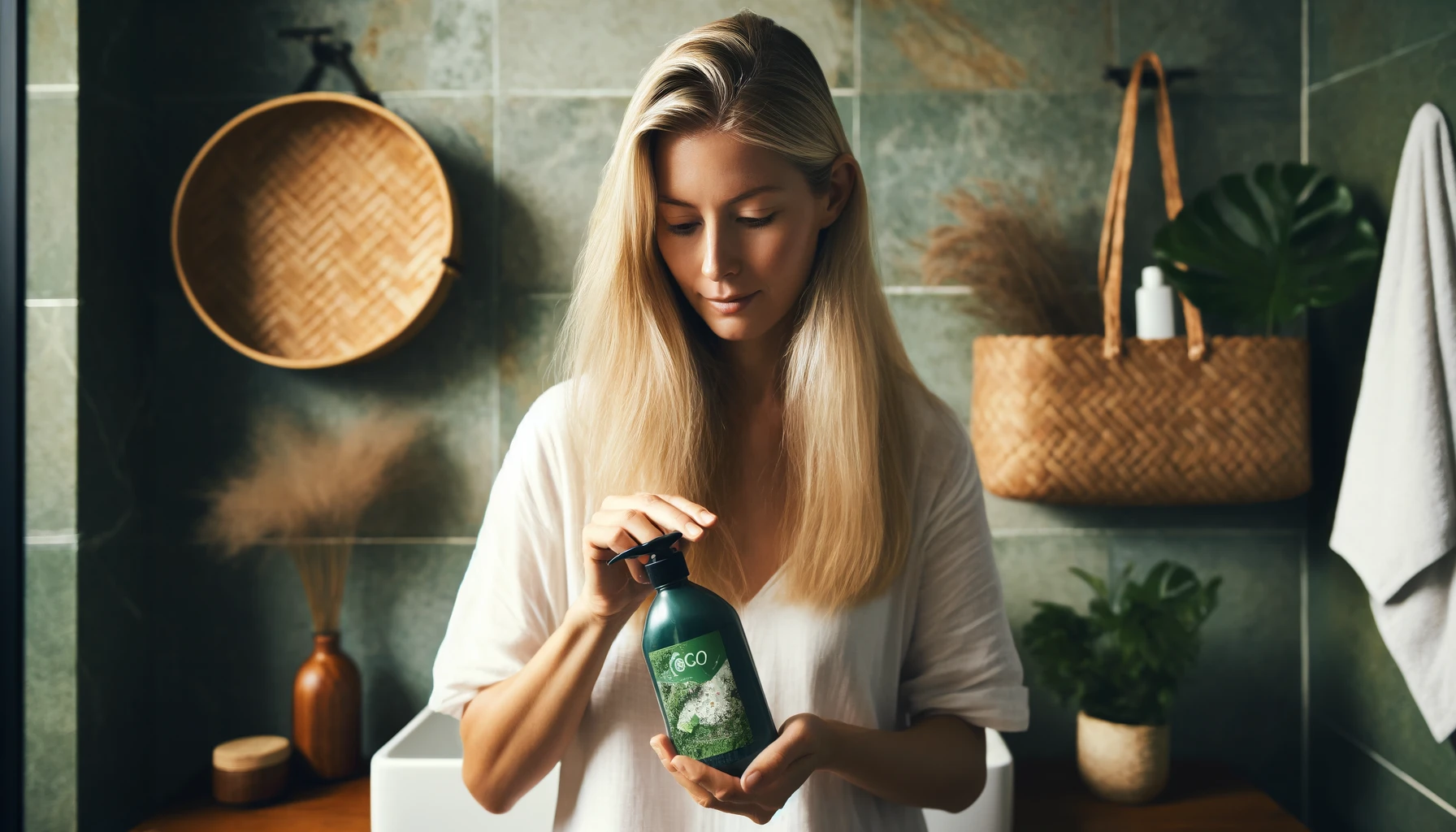
Glamour Unveiled: Exploring Trends in High-End Cosmetics
Overview of the High-End Cosmetics Industry
The high-end cosmetics industry is a thriving sector that continues to experience remarkable growth. With increasing disposable income and changing consumer preferences, the demand for high-end cosmetics has been steadily on the rise.
One key factor driving this trend is the growing consumer awareness and emphasis on beauty and self-care. As individuals seek to enhance their appearance and boost their confidence, they are willing to invest in high-quality cosmetics that deliver superior results.
The high-end cosmetics industry is characterized by a wide range of products, including skincare, makeup, fragrance, and hair care. These products are designed to cater to a discerning clientele who value premium ingredients, innovative formulations, and luxurious packaging.
Major players in the high-end cosmetics industry include renowned brands such as Chanel, Dior, Estée Lauder, and L’Oréal. These companies have established themselves as industry leaders, consistently introducing innovative products and setting trends.
Additionally, the high-end cosmetics industry is witnessing a shift towards sustainable and ethical practices. With increasing consumer consciousness about environmental issues and animal welfare, brands are adopting eco-friendly packaging materials and refraining from animal testing.
In conclusion, the high-end cosmetics industry is experiencing significant growth, driven by factors such as rising disposable income and changing consumer preferences. With the increasing demand for beauty and self-care products, brands are focusing on delivering superior quality and embracing sustainability. The next sections will delve into the emerging trends, inclusivity, customization, sustainable packaging, digital transformation, and the impact of COVID-19 on the industry.
Emerging Trends in High-End Cosmetics
Shift towards Natural and Organic Ingredients
The high-end cosmetics industry is experiencing a significant shift towards the use of natural and organic ingredients. Consumers are increasingly seeking products that are free from harmful chemicals and synthetic additives. They are becoming more informed about the potential health risks associated with certain ingredients, such as parabens and sulfates.
Brands are responding to this growing demand by formulating their products with natural and organic ingredients sourced from plants, flowers, and minerals. These ingredients not only provide effective results but also align with the rising consumer preference for environmentally-friendly and sustainable options.
Moreover, the use of natural and organic ingredients in high-end cosmetics offers various benefits, such as soothing properties for sensitive skin, antioxidant-rich formulations for anti-aging effects, and nourishing elements for overall skin health.
Cruelty-Free and Sustainable Products
Another prominent trend in the high-end cosmetics industry is the increasing popularity of cruelty-free and sustainable products. Consumers are becoming more conscious of animal welfare and are actively seeking products that have not been tested on animals.
In response, many high-end cosmetics brands are eliminating animal testing from their production processes and obtaining certifications from organizations such as PETA (People for the Ethical Treatment of Animals) and Leaping Bunny.
Additionally, sustainability has become a key focus for the industry. Brands are adopting eco-friendly practices, such as using recyclable and biodegradable packaging materials, reducing waste in production, and implementing sustainable sourcing methods.
Consumers are now more inclined to align their purchasing decisions with their values, and they are rewarding brands that prioritize ethical and environmentally-friendly practices.
Growing Popularity of Clean Beauty
Clean beauty has emerged as a significant trend in the high-end cosmetics industry. Consumers are seeking products that are free from potentially harmful ingredients and are more transparent about the formulation process.
As a result, high-end cosmetics brands are increasingly promoting transparency and ingredient integrity. They are providing detailed information about their sourcing, manufacturing processes, and the absence of harmful substances such as parabens, phthalates, and formaldehyde.
The clean beauty movement emphasizes the use of safe and non-toxic ingredients, which appeals to consumers who prioritize their health and well-being. High-end brands are actively reformulating their products to meet these clean beauty standards, ensuring that consumers can enjoy luxurious products without compromising on safety.
In conclusion, the high-end cosmetics industry is witnessing several emerging trends. The shift towards natural and organic ingredients, the popularity of cruelty-free and sustainable products, and the growing demand for clean beauty are shaping the future of the industry. Brands that embrace these trends are likely to attract and retain consumers who prioritize health, sustainability, and ethical practices.
The Rise of Inclusive Beauty
The high-end cosmetics industry is witnessing a significant shift towards inclusivity, with more brands recognizing the importance of catering to diverse skin tones, ethnicities, and body types. This trend has emerged in response to the growing demand for representation and the desire for beauty products that work for everyone. Here are some key aspects of the rise of inclusive beauty:
Expanding Shade Ranges
One of the primary ways brands are embracing inclusivity is by expanding their shade ranges. Instead of offering a limited selection of shades that cater to a narrow range of skin tones, brands are now introducing a wide variety of options to accommodate the diverse needs of their customers. By providing a comprehensive range of shades, from the lightest to the darkest, brands are ensuring that everyone can find products that match their skin tone perfectly.
This commitment to inclusivity has been driven by consumer demand and the push for representation in the beauty industry. Brands that offer a wide array of shades not only cater to a broader customer base but also send a powerful message of inclusivity and acceptance.
Diversity in Models and Influencers
In addition to expanding shade ranges, high-end cosmetics brands are also embracing models and influencers of different ethnicities and body types. This move towards representation is aimed at showcasing the beauty of diversity and breaking away from traditional beauty standards.
By featuring models and influencers from various backgrounds, brands are not only reflecting the diversity of their customers but also challenging societal norms and promoting self-acceptance. This approach resonates with consumers who want to see themselves represented in beauty campaigns and advertisements.
Impact on Brand Perception and Consumer Loyalty
The inclusivity movement in the high-end cosmetics industry has had a significant impact on brand perception and consumer loyalty. Consumers are increasingly gravitating towards brands that prioritize diversity and inclusivity, viewing them as more authentic and relatable.
When brands embrace inclusivity, they create a sense of belonging for their customers, making them feel seen and valued. This positive brand perception fosters a loyal customer base that not only purchases their products but also becomes advocates for the brand, spreading the message of inclusivity within their communities.
Moreover, inclusive beauty has shown to positively impact sales as well. Brands that have successfully positioned themselves as inclusive leaders in the industry have experienced significant growth and increased market share.
Customization and Personalization
As the high-end cosmetics industry continues to evolve, one of the key trends shaping the market is the growing demand for personalized and customizable products. Consumers are looking for beauty solutions that cater to their unique needs and preferences, and brands are leveraging technology and data to meet these expectations.
Utilizing Technology for Personalized Recommendations
Brands are utilizing advanced technology to offer personalized recommendations to their customers. Through the use of algorithms and machine learning, they are able to analyze consumer data and understand individual skincare concerns, color preferences, and fragrance choices. This data-driven approach allows brands to make tailored suggestions and create customized beauty solutions that best suit each customer.
Crafting Bespoke Beauty Products
Customization in the high-end cosmetics industry goes beyond just skincare and foundation shades. Brands are now offering the ability for customers to create bespoke beauty products, such as personalized skincare regimens and unique fragrance combinations. This level of customization ensures that customers feel a sense of exclusivity and individuality in their beauty routines.
| Benefits of Customization in the Industry: | Challenges of Customization in the Industry: |
|---|---|
|
|
Meeting Consumer Expectations for Personalization
Consumers today have higher expectations for personalized experiences, and the high-end cosmetics industry is responding to this demand. By offering customization options, brands are able to create a deeper connection with their customers and foster a sense of loyalty. Consumers appreciate the ability to have products that are specifically tailored to their needs, enhancing their overall satisfaction and brand perception.
However, customization also poses challenges for brands. It requires efficient data management systems to collect and analyze customer data accurately. Additionally, customization may lead to higher costs and complex logistics and production processes. Brands need to balance these challenges with the benefits of customization to ensure the success and profitability of their personalized offerings.
In conclusion, customization and personalization are driving significant changes in the high-end cosmetics industry. By utilizing technology and data, brands are able to provide personalized recommendations and create bespoke beauty solutions. While customization offers benefits such as enhanced customer satisfaction and increased brand loyalty, it also comes with its own set of challenges. Nevertheless, brands that successfully navigate these challenges are well-positioned to meet the evolving needs of consumers and stay ahead in the competitive high-end cosmetics market.
Sustainable Packaging and Ethical Practices
In the high-end cosmetics industry, there is an increasing focus on sustainable packaging and ethical practices. Brands are recognizing the importance of reducing their environmental impact and meeting consumer expectations for eco-friendly products. Here are some key highlights in this area:
Eco-Friendly Packaging Materials
High-end cosmetics brands are adopting a variety of eco-friendly packaging materials to minimize waste and promote sustainability. Some popular options include:
- Recyclable Packaging: Brands are using materials that can be easily recycled, such as glass, aluminum, and paper/cardboard.
- Biodegradable Materials: Many brands are incorporating biodegradable packaging made from materials like bamboo and sugarcane, which decompose naturally and minimize environmental impact.
- Refillable Packaging: To reduce waste, some brands offer refillable options for products like foundation, lipstick, and skincare items. Customers can simply purchase refills rather than the entire product.
Reducing Carbon Footprint
High-end cosmetics brands are taking steps to reduce their carbon footprint and promote sustainable manufacturing practices. This includes:
- Energy Efficiency: Brands are investing in energy-efficient manufacturing processes, using renewable energy sources, and optimizing logistics to reduce greenhouse gas emissions.
- Sustainable Ingredients: Brands are sourcing sustainable ingredients that are responsibly harvested or produced, ensuring fair trade practices and minimizing the environmental impact.
- Carbon Offsetting: Some brands are actively taking measures to offset their carbon emissions by participating in reforestation projects or supporting renewable energy initiatives.
Consumer Awareness and Ethical Practices
Consumers are increasingly mindful of ethical practices in the cosmetics industry and are making purchasing decisions based on a brand’s commitment to animal testing, cruelty-free practices, and social responsibility. Key considerations include:
- Cruelty-Free Certification: Brands that are certified as cruelty-free by organizations like Leaping Bunny or PETA are gaining popularity among consumers who prefer products that are not tested on animals.
- Vegan-Friendly Products: The demand for vegan cosmetics is on the rise, with consumers actively seeking products that do not contain any animal-derived ingredients.
- Social Responsibility: Brands that support social causes, engage in fair trade practices, or contribute to charitable initiatives are perceived positively by consumers and can build brand loyalty.
By aligning with consumer values and adopting sustainable packaging and ethical practices, high-end cosmetics brands can not only meet consumer expectations but also contribute towards a more environmentally conscious industry.
Digital Transformation and E-commerce in the High-End Cosmetics Industry
The high-end cosmetics industry is undergoing a significant digital transformation, reshaping the way brands connect with consumers and create immersive online shopping experiences.
E-commerce Platforms
One aspect of this transformation is the increasing utilization of e-commerce platforms by high-end cosmetics brands. With the rise of online shopping, brands are capitalizing on this trend by establishing their online stores, allowing customers to browse and purchase products conveniently from the comfort of their homes. These e-commerce platforms offer a wide range of products, including makeup, skincare, and fragrance, providing customers with a comprehensive selection to cater to their unique beauty needs.
Social Media Marketing
Another key digital strategy adopted by high-end cosmetics brands is social media marketing. Platforms like Instagram, Facebook, and YouTube have become essential tools for brands to showcase their products, engage with their target audience, and build a loyal following. Through captivating visuals and interactive content, brands can effectively communicate their brand story, create excitement around new product launches, and connect with beauty enthusiasts worldwide.
Influencer Collaborations
Influencer collaborations have also become an integral part of digital marketing in the high-end cosmetics industry. Brands partner with influential beauty bloggers, vloggers, and social media personalities who have a strong following and credibility within the beauty community. By collaborating with these influencers, brands can leverage their expertise and influence to promote their products, reach a wider audience, and build trust and authenticity with consumers.
The Future of Brick-and-Mortar Stores
The digital transformation of the high-end cosmetics industry has raised questions about the future of traditional brick-and-mortar stores. While physical stores still hold value, brands need to adapt and evolve to meet the changing consumer preferences. Some brands are integrating technology into their physical stores, incorporating interactive displays, augmented reality (AR) mirrors, and virtual try-on tools to enhance the shopping experience. These digital innovations provide customers with a more personalized and engaging in-store experience.
The Role of Digital Innovation
Digital innovation continues to play a crucial role in shaping the high-end cosmetics industry. Brands are exploring emerging technologies like artificial intelligence (AI) and machine learning to offer personalized recommendations based on individual preferences, skin types, and beauty goals. By harnessing customer data, brands can create bespoke beauty solutions, such as customized foundation shades, tailored skincare regimens, and unique fragrance combinations, enabling customers to find the perfect products that suit their specific needs.
In conclusion, the high-end cosmetics industry is embracing digital transformation and leveraging e-commerce platforms, social media marketing, and influencer collaborations to connect with consumers and provide immersive online shopping experiences. With the future of traditional brick-and-mortar stores evolving, brands are incorporating digital innovations to enhance the in-store experience. As technology continues to advance, digital transformation will undoubtedly remain a driving force in shaping the industry.
Sources:
– Cosmetics Business – Beauty brands focus on social media influencers as retails revive
– Beauty Packaging – High-End Cosmetics Packaging Reflects, Refines Global Beauty Industry
– ResearchGate – Digital marketing in the cosmetics industry
The Impact of COVID-19 on the High-End Cosmetics Industry
The COVID-19 pandemic has had a profound impact on various industries, and the high-end cosmetics industry is no exception. This article will explore the shifts in consumer behavior, the strategies adopted by brands to adapt to the changing landscape, and the future outlook for the industry.
Shifts in Consumer Behavior
- Increased Focus on Self-Care: During these challenging times, consumers have prioritized self-care and wellness. With more time spent at home, individuals are investing in high-end cosmetics as a way to pamper themselves and maintain a sense of normalcy amidst the uncertainty.
- Rise of DIY Beauty: With limited access to salons and beauty professionals, consumers have turned to DIY beauty routines and treatments. This has led to increased interest in at-home skincare, haircare, and makeup products, driving the demand for high-end cosmetics that deliver professional results at home.
- Surge in Online Purchasing: Social distancing measures and the closure of physical stores have accelerated the shift towards online shopping. Consumers are now more comfortable purchasing high-end cosmetics online, leading to a surge in e-commerce sales for brands.
Strategies Adopted by High-End Cosmetics Brands
- Enhanced Online Presence: Brands have recognized the importance of a strong online presence and have invested in improving their websites, optimizing e-commerce platforms, and enhancing the online shopping experience. They are also leveraging social media platforms to engage with consumers and provide virtual consultations or tutorials.
- Adaptation of Marketing Strategies: High-end cosmetics brands are shifting their marketing strategies to align with the changing consumer preferences. They are focusing on promoting self-care, highlighting DIY beauty routines, and offering tutorials and tips for at-home beauty treatments. Brands are also partnering with influencers and celebrities to create engaging content and reach a wider audience.
- Product Innovation: Companies are adopting a customer-centric approach by focusing on product innovation. They are creating new high-end cosmetics products that cater to the specific needs and preferences of consumers during this time, such as skincare products that address the skin issues caused by wearing masks or stress-relieving fragrances.
Future Outlook for the High-End Cosmetics Industry
The impact of COVID-19 has accelerated certain trends and transformations in the high-end cosmetics industry, which are likely to shape its future:
- Digital Transformation: The pandemic has highlighted the importance of digital innovations for the industry. High-end cosmetics brands will continue to invest in e-commerce platforms, virtual consultations, and immersive online experiences to provide convenience and safety for consumers.
- Hybrid Shopping Experiences: While online shopping has gained significant momentum, the future will likely see a blend of physical and digital experiences. Brands may adopt hybrid models where consumers can enjoy the benefits of both online convenience and the in-store personalized experience.
- Resilience and Adaptability: High-end cosmetics brands have demonstrated resilience and adaptability during the pandemic, quickly responding to changing consumer needs. This adaptability will be paramount in navigating future uncertainties and challenges.
In conclusion, the COVID-19 pandemic has significantly impacted the high-end cosmetics industry, leading to shifts in consumer behavior and the adoption of new strategies by brands. While the industry faces challenges, it also presents opportunities for innovation and growth. By staying attuned to consumer preferences and embracing digital transformation, high-end cosmetics brands can navigate the evolving landscape and thrive in the post-pandemic world.


